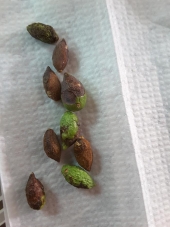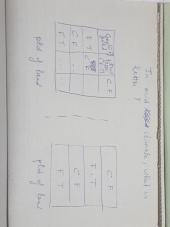

Matt McSpadden wrote:Hi Mohamed,
I'm a little late to respond, and I certainly think that there is a time and a place for picking an animal or plant and adding it to your land because you want to. But I want to suggest that you back up a little. All too often, people (like me) will find a permaculture technique (swale, keyline, herb spiral, keyhole garden, hugelkultur, food forest, etc) and have a desire to add it to the land. Not all those techniques will work well in all landscapes. They are different tools for different places.
It sounds a little bit like you are saying that you want to do what Richard is doing in your area. The reason Richard is successful is because he is applying techniques (and even animals) in a way that works for his climate. I would like to suggest that instead of asking "How can I do that here?", that you ask "What can I do here?". You will have all sorts of cool things that you can do, because you are in a dry area, that Richard cannot. And he will have things that you will not be able to do because he is in a different climate.
The best examples I could think of are Geoff Lawton and Brad Lancaster. Geoff Lawton is probably the best Permaculture designer in the world (my opinion), and years ago was featured in a documentary called Greening the Desert. I cannot find the original, but I did find a playlist with all kinds of updates about it. Explaining how he did what he did. I would definitely check that out. https://www.youtube.com/playlist?list=PL321kfqP1fZnWTPPpqZUN9ntP2-rjIP39
Brad Lancaster from Arizona also has some pretty cool stuff... though most of what I have seen with his stuff is Urban.
dee Vos wrote:Hi Mohamed
There is no-one that immediately springs to mind, but perhaps some more context might help.
What parts of Richard's operations do you want to implement? Is it just the pastured layers?
What is your current set-up in the area where you want to integrate chickens? You mention tree rows, and your hot-dry summers - what is your water retention and access situation, what is currently between the trees, are there any other systems in the same area that need to be considered?
Also, are there suitable local chicken breeds?
Sorry for all the questions but the right information will make all the difference.


Roberto pokachinni wrote:There is a lot more information, if you are just beginning your permaculture research, so what I wrote is a basic layout for general desert ideas. I suggest that you invest in a PDM (Permaculture Designer's Manual), written by Bill Mollison, and check out the drylands section. Beyond that you should watch everything that you can find online about Geoff Lawton's greening of the desert project. If you have degraded land with existing trees, or existing remnants of living trees, then you should probably also check outFarmer Managed Natural Regeneration



